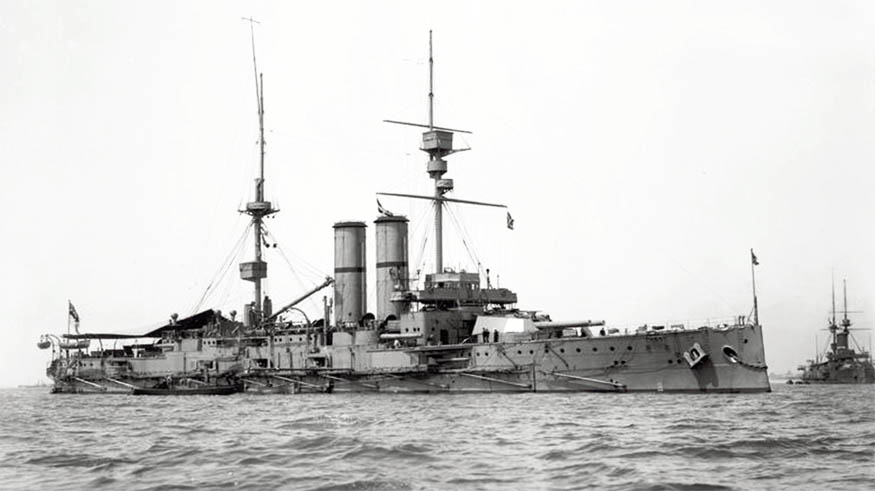Albert Edward was born on 6th May 1897 in Melton and was baptised at St Andrew’s Church, Melton, on 25th July. In 1913, he joined HMS Ganges, a boys' training establishment at Shotley, Suffolk. His occupation was given as a horse-slaughterer.
After finishing training on the HMS Ganges, Albert was posted to his first ship, HMS Hawke, a cruiser, in November 1913. On 15th April 1914, Albert became a crew member of HMS Hibernia of the 3rd Battle Squadron, based at Rosyth and later in Scapa Flow, in the Orkney’s, Scotland. In November 1915, a division of the 3rd Battle Squadron, consisting of Hibernia – which served as flagship of the division commander, Rear-Admiral Sydney Fremantle – and battleships Zealandia, Russell and Albemarle, was detached for service in the Gallipoli Campaign. The ships departed Scapa Flow on 6th November 1915 and the Albermarle was damaged in a storm soon after, forcing its return to port for repairs. The Hibernia, Zealandia, and Russell continued to the Mediterranean and arrived at the Dardanelles on 14th December 1915.

HMS Hibernia left Scapa Flow on 6th November 1915 to assist with the evacuation of the British Army when the Gallipoli Campaign was abandoned.
(IWM Q21344)
The Hibernia served as stand-by battleship at Kephalo and covered the evacuation of V and W Beaches at Cape Helles on 8th and 9th January 1916 when the British Army abandoned the Gallipoli Campaign. Later that month, the Hibernia was stationed at Milo in case she was needed to provide cover for an evacuation of the French force at Salonika. Before the end of January, Hibernia was on her way back to England, arriving at Devonport Dockyard on 5th February 1916. She underwent a refit while there, throughout February and March 1916, before rejoining the Grand Fleet.
Albert left the Hibernia in April 1916. After spending time on the books of HMS Pembroke, a shore base, he was posted once more to the Mediterranean and the Island of Malta, based at HMS Egmont (also known as Fort St Angelo), guarding Valletta Harbour. Albert stayed in Malta until February 1920 when he returned to England and hospital at Chatham in Kent. On 4th August 1920, Albert’s career in the Navy was over, and he was invalided out of the service. For his war service, Albert received the British War and Victory Medals.
On 22nd July 1922, Albert married May Brown in St Simon’s Church, Hammersmith. By 1939 the family was living in Hammersmith where Albert worked as a lorry driver.
